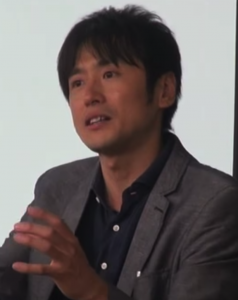Profile

- Project Associate Professor
- International Research Center for Neurointelligence, The University of Tokyo
- Department of Mathematical Informatics, Graduate School of Information Science and Technology, The University of Tokyo
- 7-3-1 Hongo, Bunkyo-ku, Tokyo 113-0033, Japan
- Tel: +81-3-5841-8247 (Ext. 28247)
- Fax:
- E-mail:fujiwara@mist.i.u-tokyo.ac.jp
C.V.
| March 2008 | Graduated from the Doctor Course of the Department of Mathematical Informatics, Graduate School of Information Science and Technology, The University of Tokyo |
|---|---|
| April 2008 | Postdoctoral Fellow of Japan Society for the Promotion of Science (Institute of Industrial Science, The University of Tokyo) |
| April 2011 | Assistant Professor at the Division of Mathematics, Electronics and Informatics, Graduate School of Science and Engineering, Saitama University |
| April 2014 | Assistant Professor at the Department of Management Science, Faculty of Engineering, Tokyo University of Science |
| April 2018 | Project Associate Professor at the International Research Center for Neurointelligence, The University of Tokyo |
Research Themes
- The main topics are computational neuroscience and data analysis of neural systems.
- 1. Computational Neuroscience
- Mathematical modeling of neural networks. Modeling various neuronal phenomena such as learning and adaptation.
- 2. Data Analysis of Neural Systems
- Establishing mathematical theories and novel analysis method of neuronal data.
- 3. Biological Information Processing
- Mathematical modeling of pancreatic beta cell and diabetes.
Selected Publications
- – R. Nomura , Y-Z Liang, K. Morita, K. Fujiwara and T. Ikeguchi,
Threshold-varying integrate-and-fire model reproduces distributions of spontaneous blink intervals,
PLOS ONE 13, 10, e0206528 (2018) - – T. Kobayashi, Y. Shimada, K. Fujiwara and T. Ikeguchi,
Reproducing Infra-Slow Oscillations with Dopaminergic Modulation,
Scientific Reports, 7, 2411 (2017) - – H. Ando and K. Fujiwara,
Numerical analysis of bursting activity in an isolated pancreatic β-cell model,
Nonlinear Theory and its Applications, 7, pp. 217-225 (2016) - – K. Fujiwara, H. Suzuki, T. Ikeguchi and K. Aihara,
Method for analyzing time-varying statistics on point process data with multiple trials,
Nonlinear Theory and its Applications, 6, pp. 38-46 (2015)









